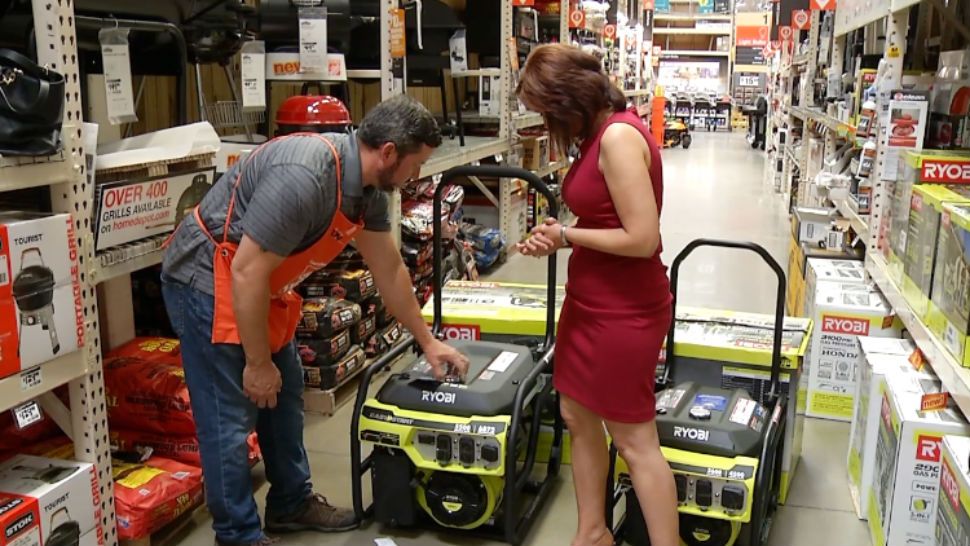When it comes to hurricane season a lot of folks are considering buying a generator — especially after all the power outages during storms like Irma.
“You live in Florida and it’s hot! You don’t realize until the air conditioning and the power goes off how much you need a generator,” said Deborah Robinson, a Lutz resident whose power went out during Irma.
Timing
Hurricane seasons can make it painfully clear, the time to buy a generator is before the season starts. After storms like Harvey and Irma hit, it was nearly impossible to find them on the shelves.
At stores like the Home Depot in Carrollwood, they could not keep generators in stock.
“They would fly off the shelves in a matter of 30 minutes. Customers were waiting in line outside the door, waiting for generators when we would get shipments in — they would be gone, like that,” said Ron Rodgers, a sales associate at the Carrollwood Home Depot.
Even after the storms were long gone from this area, generators were still hard to come by for months. Many shipments were diverted to Puerto Rico to help with the ongoing power crisis there. Just in the past month or so, though, shelves have been stocked once again.
Generators 101
There are two types of generators you can buy, a portable unit to run several appliances or a stationary unit to run your whole house.
First, you first have to get a general idea of the wattage necessary to power all of your essential appliances and other systems in your home. For example, it takes 600 to 800 watts of energy to keep your refrigerator running and 2000 to 4000 for your central air conditioning.
To determine the right size generator for you, add up the wattage needed to run all the appliances you wish to power during a blackout. Be sure to use their surge wattage (the amount of energy it takes for them to turn on) when you calculate how many things to run at once.
“Most generators do now have a surge protector, so they’ll just cut the generator off, but you never want to take the risk of possibly ruining your appliance. You want to make sure you don’t overload the system,” Rodgers explained.
The type of generator you get depends on how many things you want to run.
“If you want to keep your food cold in the refrigerator, maybe you want to watch a little TV. You want some lamps on in the house, that’s where I recommend the portable generator,” he said.
A 5500-watt medium-sized portable generator, which costs about $600, is about the right size to run a few major appliances, but not everything in your home.
Most portable generators run on gasoline or propane. So, you’ll also have to buy about 20 to 25 gallons of gas to run your generator for one to two days. For propane, you’ll need four to eight 20-pound tanks per day.
Safety
It’s imperative to make sure a portable generator is placed away from your home.
The primary hazard when using a generator is carbon monoxide (CO) poisoning from the toxic engine exhaust.
Never use a generator indoors or in partially enclosed spaces, including your garage and lanai, even if you think it has ventilation. Opening doors and windows or using fans will not prevent CO build-up.
Follow these safety tips:
- Locate the unit outdoors and away from doors, windows, and vents that could allow CO to come indoors
- Install battery-operated or plug-in CO alarms with battery back up in your home
- Test your CO alarm batteries frequently and replace dead batteries
Running the whole house
Running power for a whole house at once requires a bigger stationary unit that has to be installed.
“That’s the granddaddy,” Rodgers said. “When the power kicks off in your house, it actually turns on the power automatically.”
Stationary units run anywhere from about $2000 to more than $10,000, depending on the size of your house.
If you are thinking about buying a generator, it’s best not to wait too long. Once hurricane season gets here on June 1, you never know when the next big storm will hit. So start planning now and be prepared.



